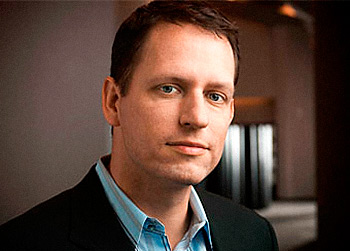· 3D Hardware
· 3D Software
· 3D Video
· 3D TV and Movies
· 3D Art
· 3D Picture of the Day
· 3D Modeling
· 3D Printing
· Reviews
· Gaming
· How To
· News
· Everything Else
· Off Topic
· Around the Web
· Virtual Reality
Posted by: Jim on: 08/20/2012 10:53 PM
The Thiel Foundation to grant $350,000 to Modern Meadow to produce 3D printed meat
 The Thiel Foundation, also known as Peter Thiel’s foundation that plays its productive role in philanthropic activities, is ready to grant up to $350,000 to Modern Meadow, that has a plan to employ 3D bioprinting to produce 3D printed meat, which will be a replacement for the common meat that people use in their daily meals today.
The Thiel Foundation, also known as Peter Thiel’s foundation that plays its productive role in philanthropic activities, is ready to grant up to $350,000 to Modern Meadow, that has a plan to employ 3D bioprinting to produce 3D printed meat, which will be a replacement for the common meat that people use in their daily meals today.
According to Modern Meadow, the 3D printed meat will bring many advantages to people including its environmental friendly approach for dinner.
Normally, 3D printing has been vastly used in the making of medical implants, running shoes and in the production of firearms, like a .22 calibre handgun.
The central idea that forced Modern Meadow to work on it is that the production of bioprinted meat, which is not only environmental friendly, but also, satisfies the needs of human beings who need to intake protein from animal meat.
The co founder of Thiel Foundation, Andras Forgacs, expressed that the traditional way of getting protein from animals as being very costly since it results in a huge amount of money spent in the field of livestock.
He said, "If you look at the resource intensity of everything that goes into a hamburger, it is an environmental train wreck."
Lindy Fishburne, the executive director of Breakout Labs, a project of Thiel Foundation, also supported the plan of Modern Meadow.
He said, "Modern Meadow is combining regenerative medicine with 3D printing to imagine an economic and compassionate solution to a global problem. We hope our support will help propel them through the early stage of their development, so they can turn their inspired vision into reality."
The co-founder of Modern Meadow, Andras Forgacs provided a strong cushion to the 3D-printed meat by calling it much better as compared to the environmental train wreck of hamburgers, which have become an essential item on peoples menu all around the world.
However, Modern Meadow’s plan of 3D printed meat is passing through its initial phase at the moment, and they have set a short term goal to first create a one inch long slice of synthetic meat before moving on to much bigger products.
According to Modern Meadow, the 3D printed meat will bring many advantages to people including its environmental friendly approach for dinner.
Normally, 3D printing has been vastly used in the making of medical implants, running shoes and in the production of firearms, like a .22 calibre handgun.
The central idea that forced Modern Meadow to work on it is that the production of bioprinted meat, which is not only environmental friendly, but also, satisfies the needs of human beings who need to intake protein from animal meat.
The co founder of Thiel Foundation, Andras Forgacs, expressed that the traditional way of getting protein from animals as being very costly since it results in a huge amount of money spent in the field of livestock.
He said, "If you look at the resource intensity of everything that goes into a hamburger, it is an environmental train wreck."
Lindy Fishburne, the executive director of Breakout Labs, a project of Thiel Foundation, also supported the plan of Modern Meadow.
He said, "Modern Meadow is combining regenerative medicine with 3D printing to imagine an economic and compassionate solution to a global problem. We hope our support will help propel them through the early stage of their development, so they can turn their inspired vision into reality."
The co-founder of Modern Meadow, Andras Forgacs provided a strong cushion to the 3D-printed meat by calling it much better as compared to the environmental train wreck of hamburgers, which have become an essential item on peoples menu all around the world.
However, Modern Meadow’s plan of 3D printed meat is passing through its initial phase at the moment, and they have set a short term goal to first create a one inch long slice of synthetic meat before moving on to much bigger products.

